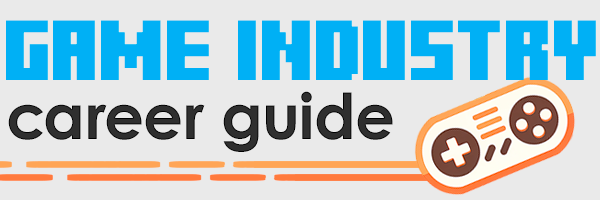Game Resume Breakdown: Watch Me Review 3 Actual Resumes (CVs)
Today, I’m doing a video “teardown” of 3 actual resumes from job-seekers in the video game industry. All of the resumes are pretty good, but they make some super-common mistakes that I see all the time. With just a little more work, these can become the sort of eye-catching resumes that are impossible for recruiters and hiring managers to overlook.
Most of these mistakes are extremely common—in fact, I’d be willing to bet that your own resume contains at least 3 of these mistakes right now! Watch the video to learn what they are, and how you can fix them before you apply for your next job.
Resume #1: Game Designer/Tester
Start Time: 0:30
The good
- Headline (2:26): Grabs the reader’s attention with strong/dynamic words like “dedicated,” “ambitious,” and “focused.” Piques the reader’s interest.
To improve
- Headline (1:22): The headline lists 3 different jobs that the candidate might want. This makes it hard for hiring managers to know what job the candidate wants and would be a fit for. Instead, state only 1 job, and write different resumes for each job you’re applying for.
- Work Experience (2:56): Not big enough, should be 50-80% of the page. And put it higher on the page. Don’t talk about the company you worked for—this section is for talking about what you did and what you accomplished, not a profile about the company. This section should give hiring managers clarity on your skill set.
- Layout (4:57): 2-column layouts waste a lot of space. Change to a single-column layout to fit more information into a single page.
- Portfolio (5:33): It’s important to link to your online portfolio, but make sure it’s a strong portfolio that looks really good.
- Profile Photo (6:06): Don’t include a profile picture (or any information about your marital status, political leanings, etc.). It’s not important what you look like—it’s important what you accomplished.
Resume #2: Game Programmer/Designer
Start Time: 7:20
The good
- Profile (8:15): Grabs the reader’s attention immediately by mentioning an impressive early start on game development at an early age. Great example for others to learn from.
- Conferences (13:40): Includes the candidate’s speaking engagements related to the game industry. (But make sure it’s clear that you were a speaker, not just an attendee!)
To improve
- Work Experience (8:50): This section is too tiny! Expand each role with info about what exactly you did. Be specific about exactly what you programmed, and what the results were for the project.
- Length (10:15): This resume doesn’t need to be 2 pages. Unless your career has spanned 10+ years, you should be able to fit your resume on a single page.
- Layout (10:45): 2-column layouts waste a lot of space. Change to a single-column layout to fit more information into a single page.
- Progress bars (11:10): Don’t waste space by trying to indicate your experience with “progress bars,” stars, etc. (What does it mean to be “3/4 experienced” with Unreal Engine?) Just mention that you have the skill.
- Education (12:15): Don’t list every course you’ve taken. Try to sum up your education into 2-3 bullet points, even if that means compressing it down to an overview such as “multiple online game courses from Stafford, and University of Pennsylvania.”
Resume #3: Game Artist
Start Time: 14:50
The Good
- Profile (15:44): Good profile writeup. Nice overview, good context, good sales pitch!
To Improve
- Work Experience (17:00): Be sure to give detail on what you actually did, and what was the impact to the project. Write 3-5 bullet points for each job in the work history. What kinds of characters did you animate? Low poly, high poly? How many, in how much time?
- Work History (16:10): Use bullet lists, rather than a narrative. Narratives are hard to skim, and hard to quickly comprehend.
- Layout (18:40): Ditch the 2-column layout, because it wastes space. You can fit a lot more useful info in a single-column layout.
- Education (18:55): Don’t need the large list of all the courses taken. List the degrees, but don’t list every course/certificate—compact it down, to save more space for the Work Experience.
- Inconsistent “voice” (19:40): Use consistent grammar throughout the resume. It’s typical to use the “implied first-person” past tense voice—in other words, write it like it’s first-person but omit the “me/I”. (Instead of “I created high-quality CGI products,” just say “Created high quality CGI products.”)
Read my new book!
Making games for a living is an incredibly rewarding career, but it’s hard to break in unless you have insider knowledge. This book levels the playing field.


Leave a Reply